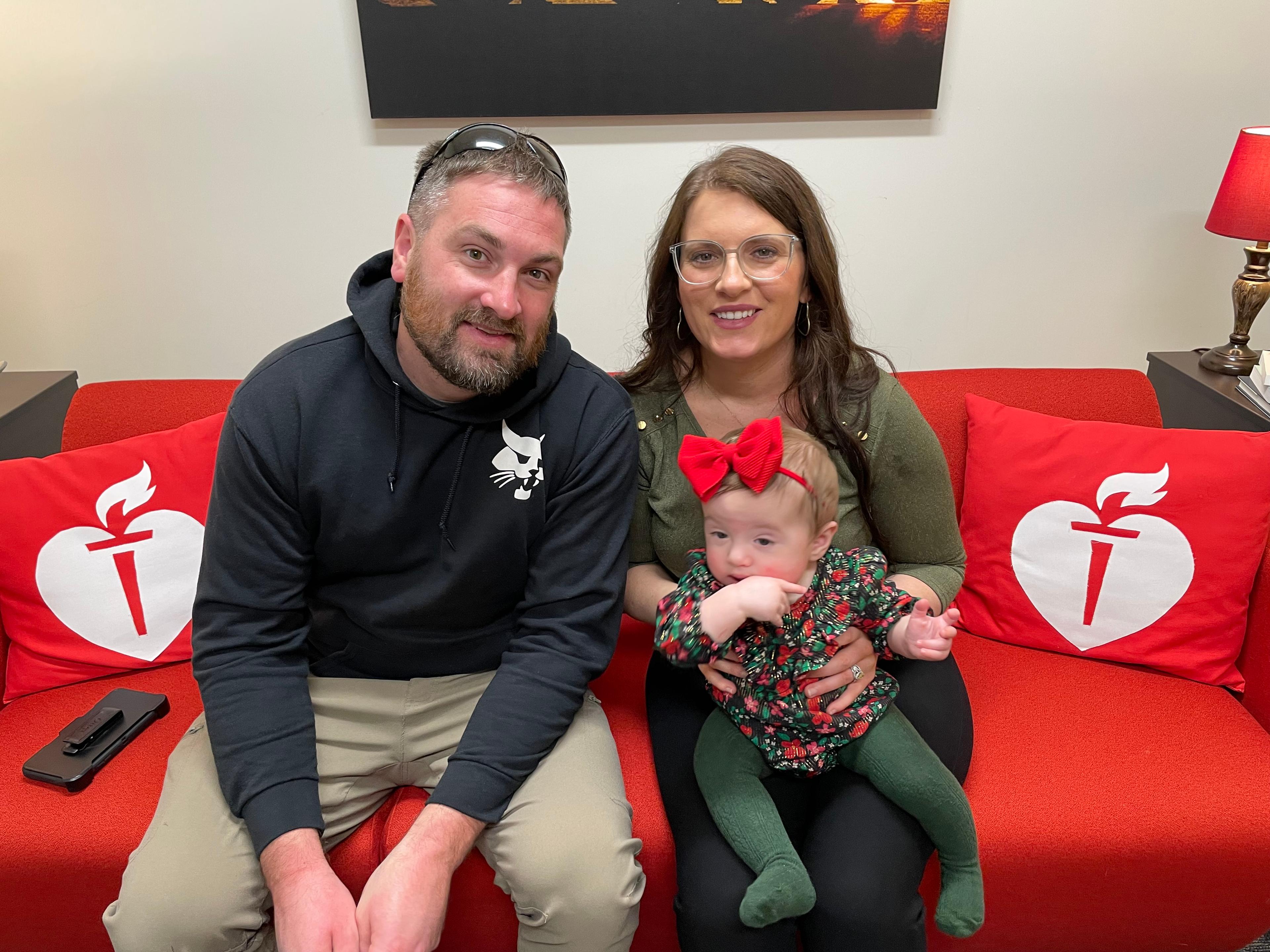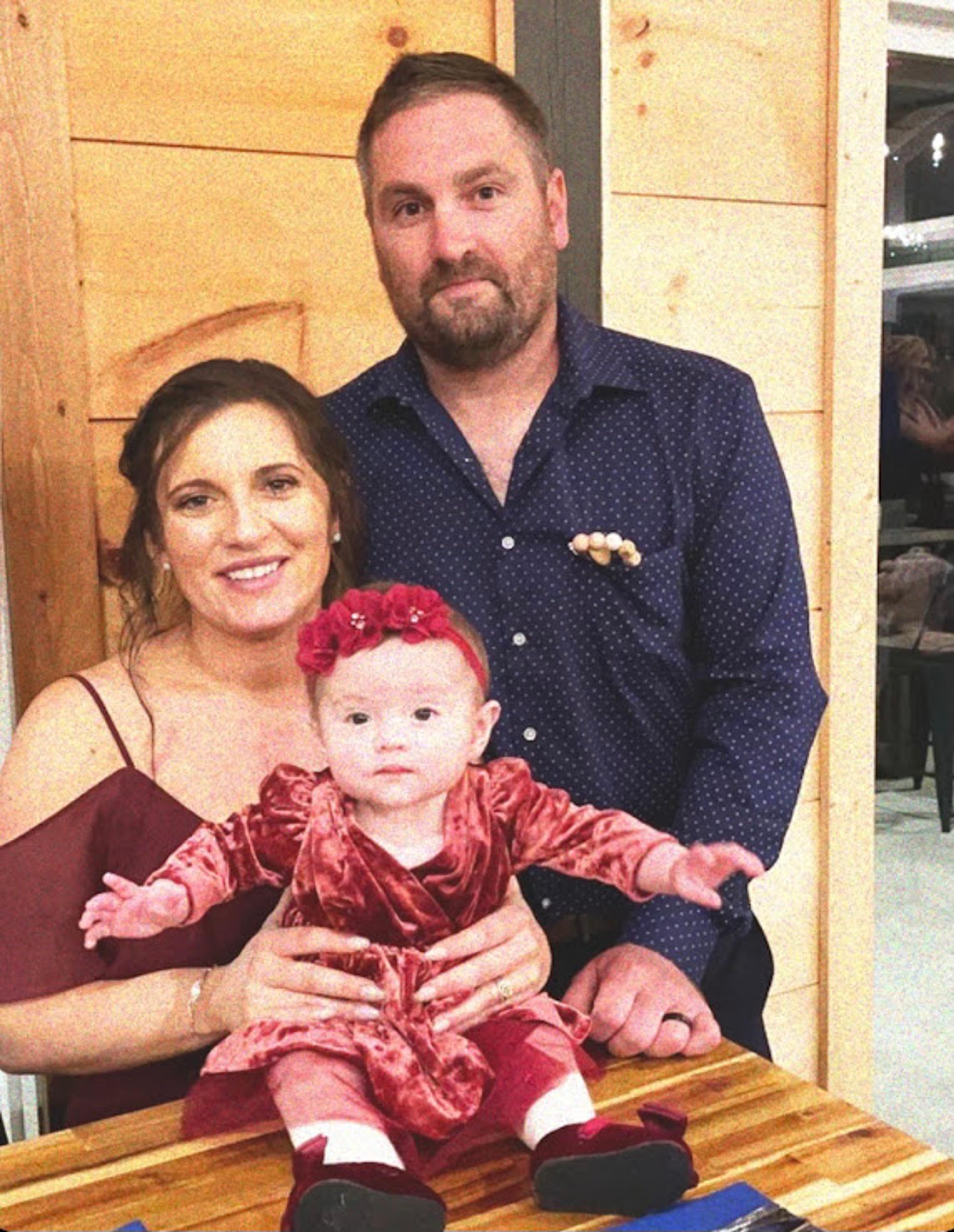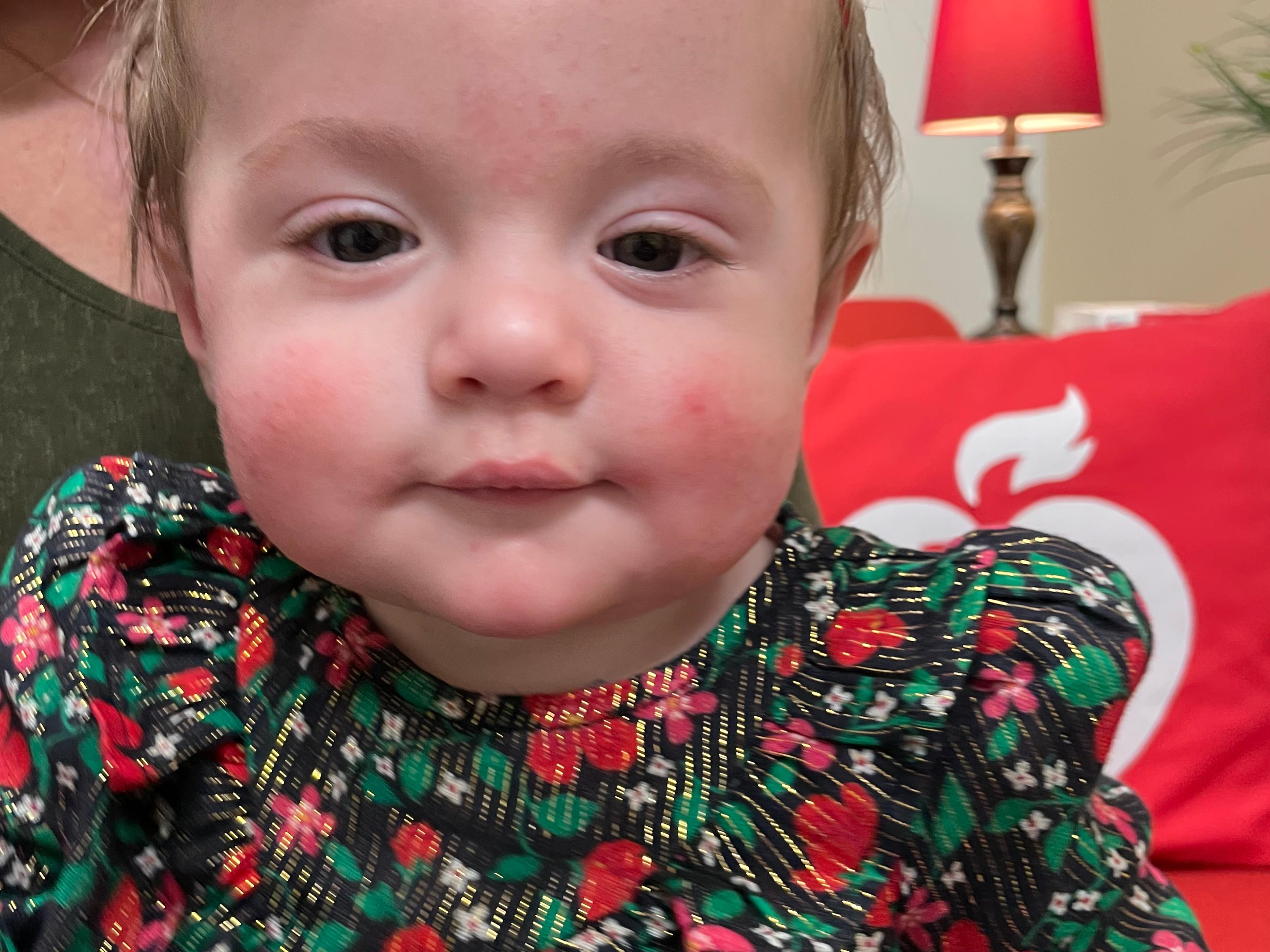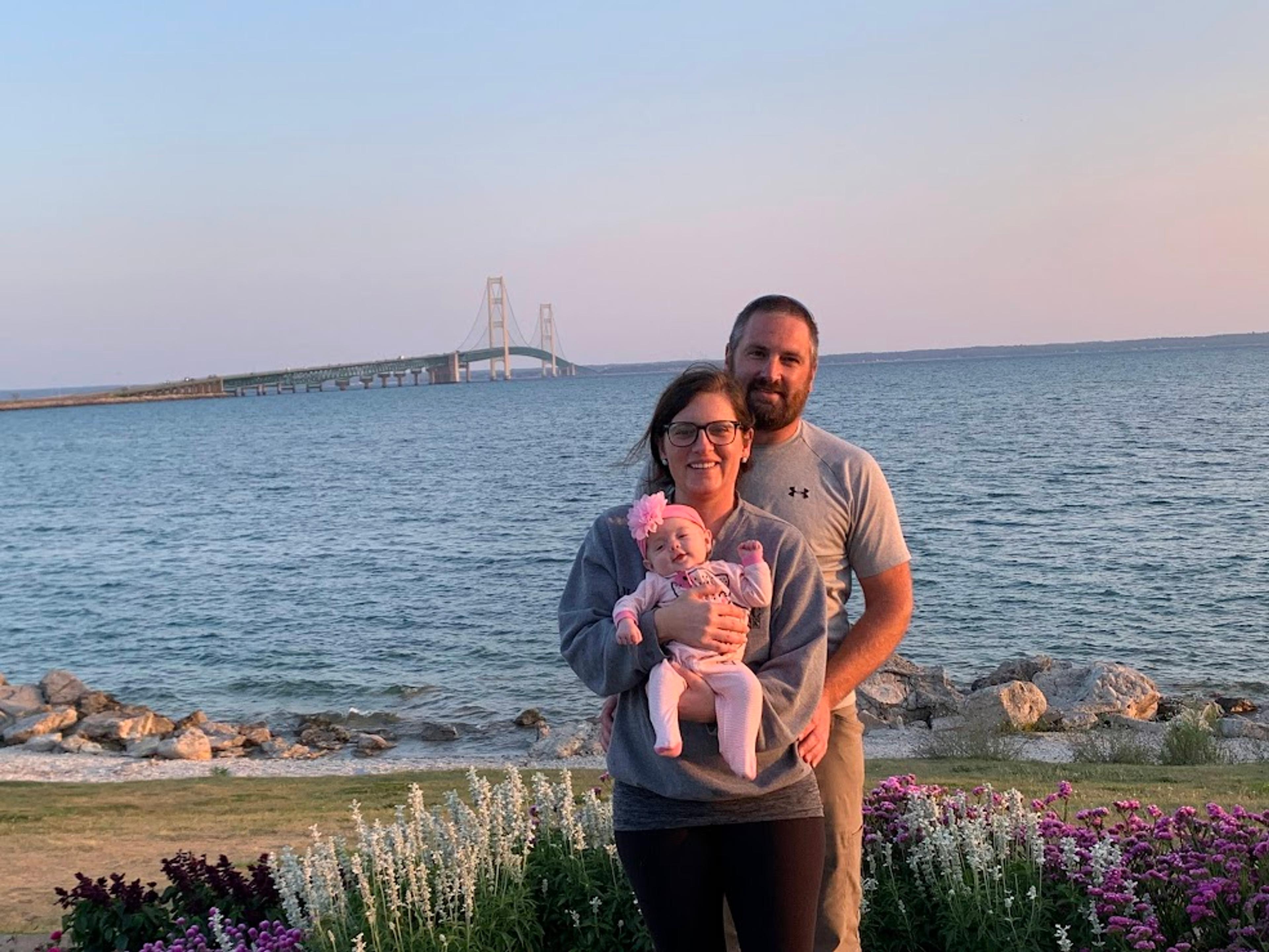Michigan Mom with Rare Heart Disease Credits Her Baby with Saving Her Life
Amy Barczy
| 5 min read

Amanda Banic, 35, almost died from a rare, genetic disease that caused her heart to tear apart – and she credits her baby with saving her life.
Banic and her husband, Derek, live in the small West Michigan community of Hartford. When the couple learned about the pregnancy, they had been trying for a baby for three years and they were on top of the world. Fit and active, Banic said she loved every minute of being pregnant.
In week 34 of her pregnancy in May 2023, Banic woke up with intense chest pains in the middle of the night. Her obstetrician advised her to go directly to the hospital’s labor and delivery department, where they monitored her for several hours. Banic was sent home with a diagnosis of anxiety and indigestion – and she felt frustrated.
“I felt like I advocated for myself in those hours; I said, ‘That’s not what this is,’” Banic said.
The following week, her health started to change rapidly. She gained nearly 20 pounds, and her feet swelled so badly she had to size up in slip-on shoes.
“I was having trouble breathing; trouble doing everything,” Banic said.
Six days after her first chest pains, the pain came back – only this time, more intense: they radiated into her jaw, and she started to lose her vision. The pain stabbed from her front to her back and would not relent.
After her last experience at the hospital Banic felt defeated: the only thing motivating her to go to the emergency room was worry for her baby’s life.
At the hospital after several CAT scans, doctors and nurses prepped Banic to be transported by ambulance to a bigger hospital in Grand Rapids. At the time, she didn’t know how serious her condition was. She would later learn that the aorta in her heart had torn, and needed repairs immediately.
“I wasn’t questioning things because I knew they were going to help. There was a sense of relief,” Banic said, explaining how it was good to know the doctors were taking her condition seriously and not dismissing it. “Never could I have imagined what was about to happen.”
When she arrived at the hospital in Grand Rapids and was wheeled into an operating room filled with more doctors than she’d ever seen, reality hit.
“It was in that moment that I realized I maybe wasn’t going to get through,” Banic said.
Life-changing surgeries
Banic divides her life around that moment that she went into surgery in May 2023: both to deliver her baby, and to repair a life-threating aortic dissection.
The last conscious memory of “who I used to be,” as she puts it, was her telling the doctor at her bedside, “Please make sure I get to meet my baby.”
After her daughter Baylor was delivered healthy and safe by cesarean section, Banic underwent a 13-hour open heart surgery to repair her aorta and was on life support. The next morning, she went right back into surgery for a triple bypass to save her life again.

For six days afterwards, Banic remained on life support. Her husband Derek cared for Baylor, and mom and daughter shared skin-to-skin time. Even though Banic was not conscious, she would react to her daughter’s presence – and baby Baylor responded in kind.
On Mother’s Day – May 14, 2023 – Banic was taken off of life support and was able to fully meet Baylor for the first time.
Banic credits Baylor’s presence in the womb for helping to keep her alive until the doctors could perform surgery.
Banic has since been diagnosed with Loeys-Dietz Syndrome, a genetic disorder that affects connective tissues in the body. It can affect the heart – causing the aorta to become enlarged to the point that it can bulge or tear. In Banic’s case, her aorta was torn – called a dissection.
“The doctors told me that it was inevitable that something like this would happen, and my pregnancy created the perfect storm,” Banic said.

Taking no moment for granted
This February, Banic is being honored at the American Heart Association’s Grand Rapids Go Red for Women luncheon. Cardiovascular disease is the leading cause of maternal death in the U.S., and the Go Red for Women movement works to address clinical care gaps women face with their heart health – especially during pregnancy.
As Banic watches her daughter grow, she has a new perspective on the experience – and a huge motivation for recovering from the life-altering surgery.

Her goal: to build up her endurance.
“I used to be go, go, go,” Banic said. “I’m just very restricted now. The simple things – like going up a flight of stairs – those just wear me down.”
She’s working to get into a cardiac rehab program so she can learn how to safely exercise again, and to build up her strength.
Now, Banic says she soaks all of the moments in – and doesn’t take anything for granted.
“I am a lot more aware of how precious every single little moment is, every single day,” Banic said. “I am way more grateful than I’ve ever been – just the little things that I might have let slip by before; I am just so much more aware of everything.”
Photo credit: Courtesy of the American Heart Association - West Michigan/ Amanda Banic





